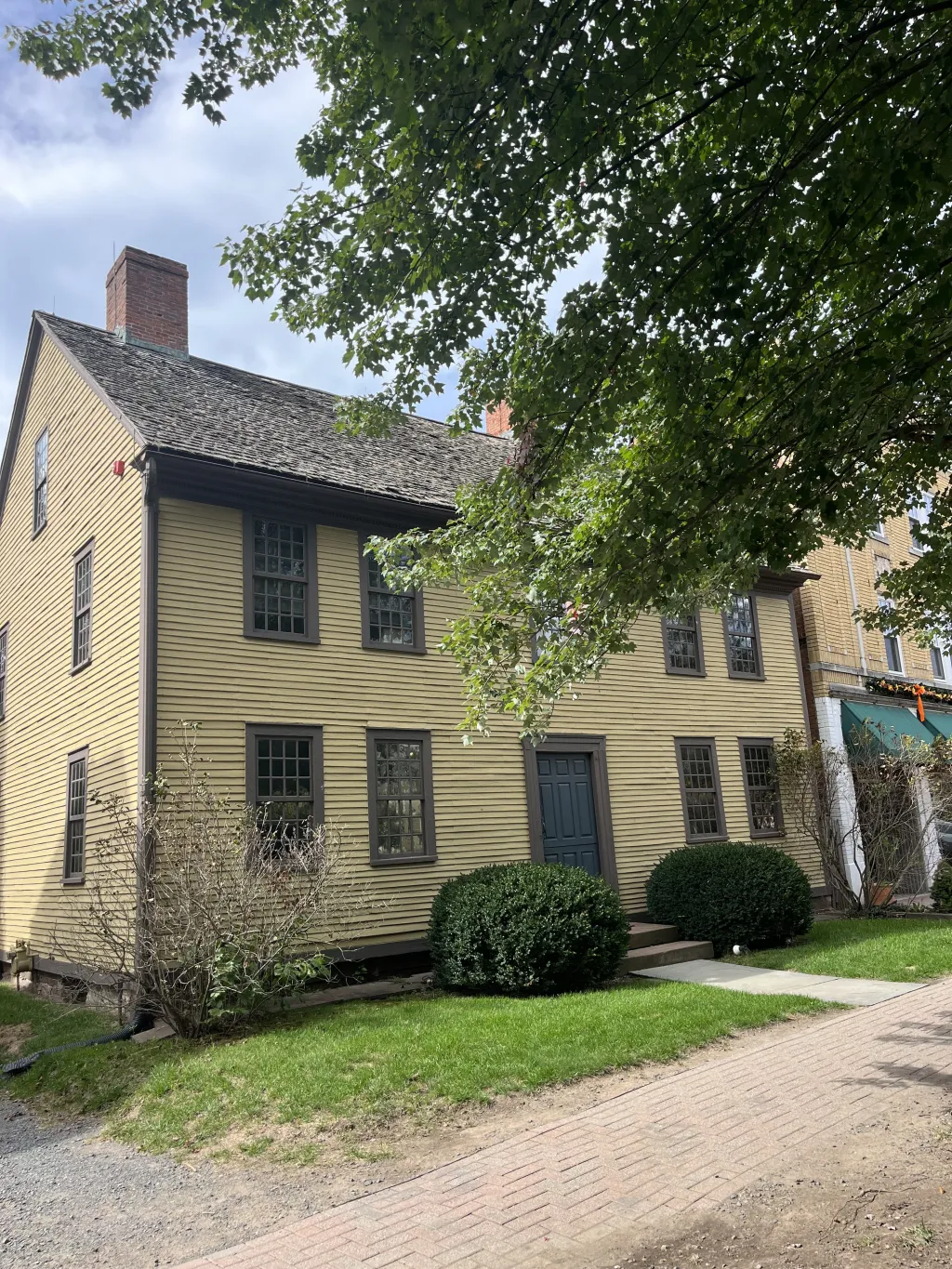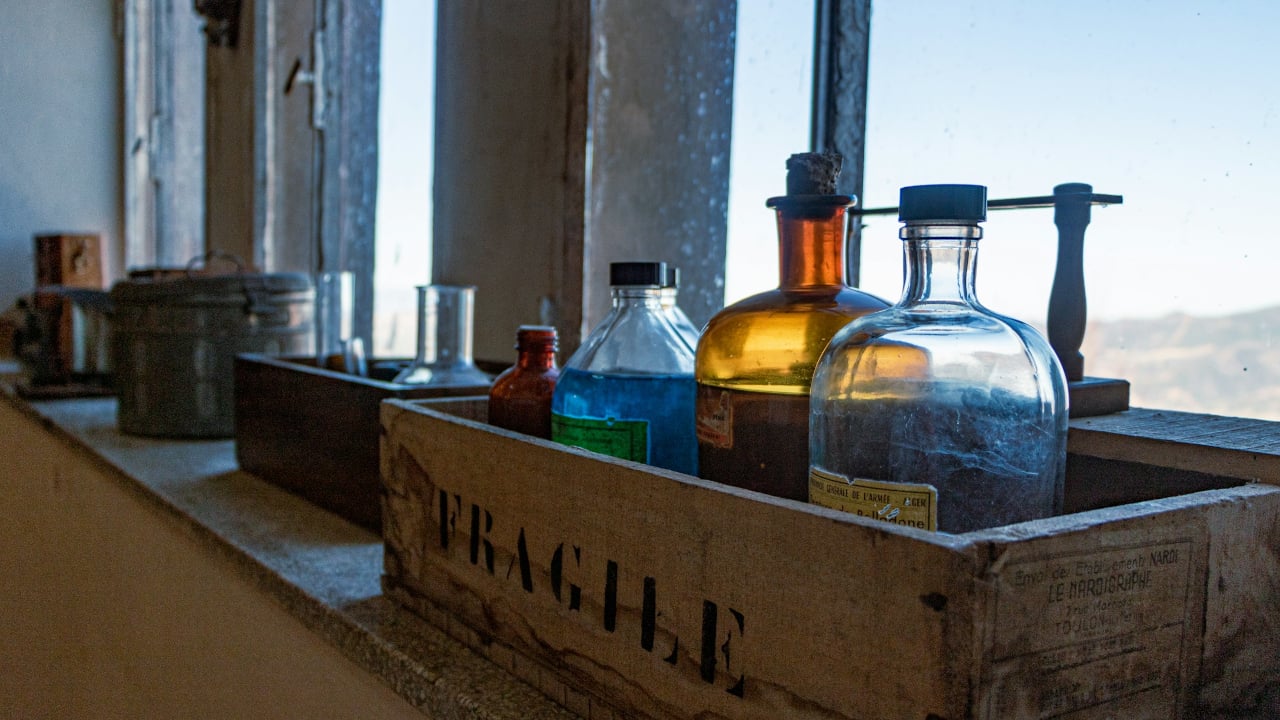
Yes, the first president of the United States really did sleep in one of the homes preserved by a Connecticut museum that has been sharing the nation’s history, and much more, for the last century.
And George Washington’s slumber, during a post-1776 period, came during a time when he was meeting with the French Royal Army’s Comte de Rochambeau to plot the military movements that would bring the victory at Yorktown and the end of the American Revolution, according to Webb Deane Stevens Museum Executive Director Brenton Grom.
Yet, even though that quite renowned American patriot (he wasn’t president until a few years later) laid his head down in the Joseph Webb house, it and other homes that are part of the museum in Old Wethersfield have extensive further and rich histories that tell the story of Connecticut and early America.
“What we have in these houses takes us from the conditions that spawned the American revolution to people who found they could get ahead,” said Grom, who is a font of detailed information about so many aspects of life in the colonies and later.
It is history worth preserving, he said. The homes are owned by the National Society of The Colonial Dames of America in The State of Connecticut.
Now, the museum has been named recipient of a Semiquincentennial grant of $223,138 from the Historic Preservation Fund administered by the National Park Service, Department of the Interior, Grom said.
The money will be used toward the restoration of the roof of the Isaac Stevens House, not only for preservation of an important example of post-Revolutionary architecture, and its contents, but also work that is occurring as America nears its 250th anniversary, he said. The work will begin in the spring, he said.
“There is never a time when one of these house doesn’t need something,” Grom said.
The Isaac Stevens House, from 1789, is an “excellent illustration of ideals and condition that played out after the war,” said Grom, noting that artisans and craftsmen played a big role in the American Revolution. Stevens made a good life, his house was a “very nice upper middle class house” and he became a banker, Grom said. “It’s a very American story: individual liberty, and opportunity.”
“Material that people leave behind tells a great deal,” he said.
Stevens built his home next to the Webb and Deane homes in 1789 and while his fortunes rose, those of the Webb family declined after the revolution, Grom said. Stevens was in the tanning business with one of Joseph Webb’s sons, Grom said.
Grom said the National Society of the Colonial Dames of America, which has about 230 members in Connecticut, bought the Webb House in 1919 and restored it, and in the late 1950s the Dean house was given to them by a member of Congress and the Stevens house, which has never been sold and was in that family for many years, was then left to people who worked there and eventually turned over to the society, he said.
“By the late ‘50s they had all three of the houses, restored all of them and were instrumental in preserving a lot of properties, Grom said. “The museum itself is a treasure and a landmark … it is really a destination.”
Grom said the Stevens house, unlike the other two, also retained a lot of family items and furniture, which are good examples of the 18th century social and economic times.
The roof project is intended to end any water leaking into the home, as it could damage items contained in it, he said. “If we weren’t doing this work, we would be running a risk of damaging the finishes inside the house, collections.”
Wethersfield and the houses were part of the trajectory of the American Revolution, he said.
“They are of national interest,” he said, as it is looking at the lives people led during that time.
For example, Grom said, Joseph Webb was a flourishing merchant, with “a very lucrative trade” who brought his two brothers to Wethersfield because business was so good.
At the time, “we’re now leading up to the (American) Revolution,” Grom said, and seeing “a very American story” of rising from humble beginnings to financial success and influence.
The Webb, Deane, and Stevens homes are next to each other and in many ways their lives also intertwined in the town that capitalized on being so close to the Connecticut River and then its farthest navigable inland site.
Silas Deane was the son of a blacksmith, and he graduated from Yale University and became a lawyer, was a part of negotiating with the French during the Revolution, went to the Continental Congress and also married Joseph Webb’s widow, Mehitable Nott Webb, and became a merchant too, Grom said.
“Wethersfield was a place of a lot of action,” Grom said, of the town founded in 1634.
While Mehitable died not long after the couple married, Deane was living in the Joseph Webb house, and “he left his mark of ambition and cosmopolitan taste,” Grom said. He said a “very very rare wallpaper” was found in the Washington chamber. The significance, Grom said, is that it has a tax stamp showing it was imported from England, even as the Colonies were leading up to the revolution.
The wallpaper fragment that survives from that house and was only recently discovered, depicts an English symbol used as late as 1773, and demonstrates an interest in taste, style and fashion, Grom said. “It goes to show human existence is very complicated,” he said.
“He wielded influence he had as a merchant into political influence,” Grom said. “His hunger for being at the pinnacle of fashion was really paramount to him.”
“We have in the museum these preserved trappings of people, (their) material lives and the conditions in which they were operating,” he said. Deane also married Elizabeth Saltonstall, granddaughter of governors of Connecticut and Massachusetts, Grom said.
Deane, who “stuck his neck out for the American colonies, but at a personal price,” faced a partisan Congress, biased press and public opinion, Grom said. He died in 1789 while waiting to leave England, and his family was only compensated much later for money owed to them. Deane butted heads with Arthur Lee, a member of the American delegation to go to France, as was Benjamin Franklin.
Grom said Old Wethersfield was the first historic district in the state and is the largest. The town had “excellent foresight” to head off the deterioration of older areas, through the creation of the Silas Deane Highway, which kept traffic to another area, he said.
The museum site is eight acres of land between the different parcels, and has lawn space, a colonial revival garden, and the Webb barn, Grom said. “There are a lot ways to experience the campus.”
Grom said the museum does a “great deal of programming” and that it is a “great place for people to come together and experience these things.” For example, he said one was held close to last year’s election on political speech in America. Upcoming programming includes events designed around the Halloween holiday.
Grom said the Webb and Deane families did have enslaved people at the homes. He said the Wethersfield Historical Society recently launched an index of people known to be enslaved in the town.
The Webb Deane Stevens Museum is located at 211 Main St., Wethersfield and can be reached by contacting 860-529-0612.



